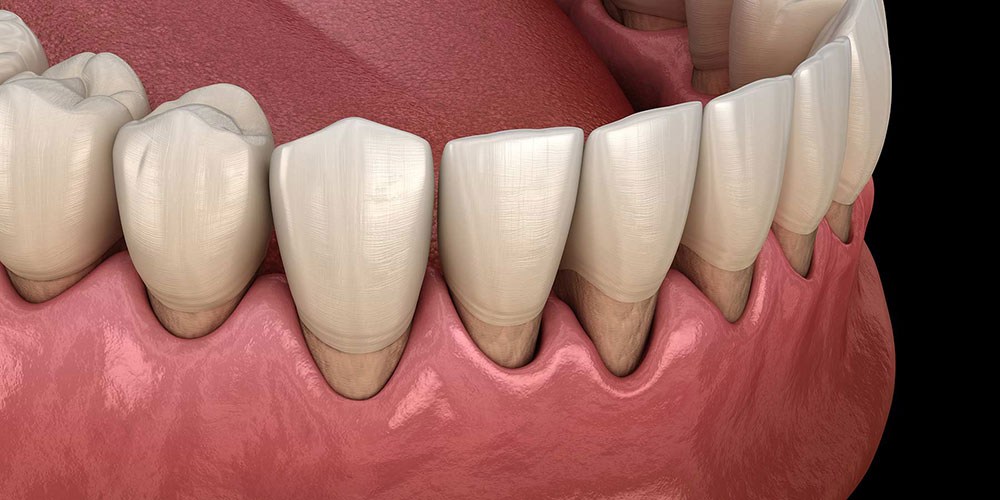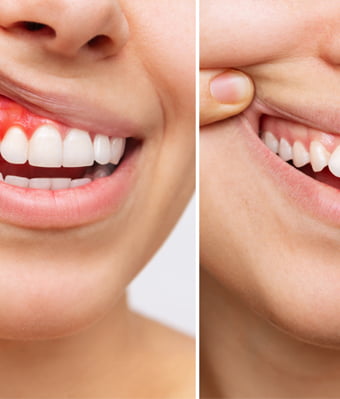Gum Disease
When we think about health, we often zero in on diet, exercise, and maybe blood pressure. But what about your gums? The Centers for Disease Control and Prevention (CDC) reports that nearly 47.2% of adults over 30 are living with some form of periodontal disease — a staggering number for a condition that often flies under the radar. And here’s the kicker: your dental health doesn’t just affect your smile — it’s deeply tied to your overall well-being. From your heart to your immune system, your gums play a bigger role than you might think.

What is Gum Disease?
At its core, gum disease (also called periodontal disease) is an infection caused by plaque that sticky, bacteria-packed film that loves to cling to your teeth. When plaque builds up and isn’t properly cleaned away, it can spark inflammation and infection in your gum tissue. Left unchecked, things can go from a little annoying to downright dangerous.
This is where a periodontist, a dental specialist focusing on gum health, comes in. Their job is to help prevent, diagnose, and treat gum problems before they cause lasting damage.

Stages of Gum Disease and Treatments
Gingivitis
Gingivitis is the early warning sign. If your gums are red, swollen, or bleed a little when you brush or floss, that’s gingivitis tapping you on the shoulder. The good news? It’s reversible. The Mayo Clinic points out that with consistent oral hygiene — brushing, flossing, and regular professional dental care — you can usually stop gingivitis in its tracks.
Periodontitis
When gingivitis isn’t caught in time, it can advance into periodontitis. This is when the real trouble begins — your gums start pulling away from your teeth, creating deep pockets that become breeding grounds for bacteria. Bone loss can follow, and eventually, teeth may become loose or fall out.
Treatment options depend on how advanced things are. For early periodontitis, a deep cleaning known as scaling and root planing might do the trick. More advanced cases could need periodontal procedures like gum surgery or regenerative techniques to rebuild lost bone and tissue. After treatment, maintaining great oral hygiene at home and sticking to regular check-ups becomes non-negotiable.
Best Dentists in Washington & Oregon
Preventive Measures
Here’s the magic formula for preventing gum disease (and it’s easier than you might think):
- Brush and floss daily — no shortcuts.
- Quit smoking — tobacco use is one of the biggest risk factors for gum disease.
- Eat a balanced diet — your gums need vitamins and nutrients too.
- Manage underlying health conditions — especially diabetes, which can worsen gum disease.
- Make those regular dental check-ups a non-negotiable — because when it comes to preventive dentistry, early detection is everything.
The National Institute of Dental and Craniofacial Research (NIDCR) highlights that proper brushing and flossing significantly reduce the risk of gum disease a small daily investment that pays off big in your future health.
Advanced Treatments for Gum Disease
Sometimes, even with our best efforts, gum disease can creep in. When that happens, advanced treatments step in to help.
- Scaling and root planing: This deep-cleaning procedure removes plaque and tartar from below the gum line and smooths the tooth root to encourage healing.
- Gum recession treatments: If your gums have pulled away from your teeth, procedures like gum grafts or the pinhole surgical technique can help restore healthy tissue and protect your roots.
These aren’t just cosmetic fixes — they’re critical to preserving your oral health.
Connection Between Gum Disease and General Health
Your mouth isn’t an isolated system it’s deeply connected to the rest of your body. The American Academy of Periodontology (AAP) emphasizes that gum disease isn’t just a mouth issue it’s linked to a higher risk of heart disease, diabetes complications, respiratory infections, and even adverse pregnancy outcomes.
Emerging studies continue to explore these connections, but one thing is clear: taking care of your gums is a major step toward taking care of your whole body.

Professional Cleanings and Post-Procedure Care
If you’re serious about keeping gum disease at bay (or preventing it from coming back), professional dental cleanings are your secret weapon. The American Dental Association (ADA) stresses the importance of regular dental checkups and cleanings, noting that routine maintenance is essential for catching gum issues early.
Most dental professionals recommend cleanings every six months, but if you’ve had gum disease before, you might need them more often — sometimes every 3-4 months.
After any periodontal procedures, post-care is critical:
- Follow strict oral hygiene routines — gentle brushing and flossing.
- Eat a soft, balanced diet — especially right after procedures.
- Skip tobacco and alcohol while healing.
- Keep up with maintenance visits — they’re your lifeline for long-term success.
Gum disease might start quietly, but if left unchecked, it can roar into a major health issue. The good news? With early detection, proper treatment, and a little commitment to daily care, you can protect your smile and your health for life.
Haven’t seen your dentist in a while? Here’s your friendly reminder: your gums — and your overall health — are counting on you.
